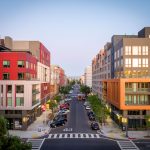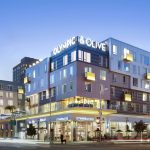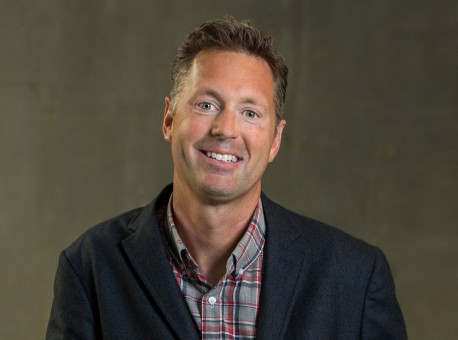David Senden – Better Together: The Modern Mix of Uses
ReBusinessOnline
July 10, 2017
Mixed-use has evolved to include a variety of uses, making the projects compelling, entertaining and convenient for all who visit.
By David Senden
The best mixed-use neighborhoods include a little bit of everything. More than just a little retail store beneath a housing development, the most successful projects are those that create places for people to live, shop, recreate, work and, most importantly, interact. It’s difficult to create all of this in one building, which is why mixed-use buildings within a context of a singular fabric often lack the vibrancy to succeed. The best mixed-use projects work as districts with enough critical mass to enable people with many different agendas to operate within the same context.
 At Fourth Street East, Carmel Partners commissioned KTGY Architecture + Planning to design 330 residential units in two, seven-story buildings in Oakland’s Historic Jack London Square district.
At Fourth Street East, Carmel Partners commissioned KTGY Architecture + Planning to design 330 residential units in two, seven-story buildings in Oakland’s Historic Jack London Square district.
At Fourth Street East, Carmel Partners commissioned KTGY Architecture + Planning to design 330 residential units in two, seven-story buildings in Oakland’s Historic Jack London Square district. These buildings add residential to the neighborhood, creating a vibrant morning-to-evening environment. Additional residents will support the demographic for additional retail. Ground-floor retail at Fourth Street East totals 3,000 square feet with key spaces featuring 20-foot high ceilings, and each corner is flanked by either a shop or restaurant.
KTGY also designed Olympic & Olive in Downtown Los Angeles, where it is an integral part of the booming South Park neighborhood. The seven-story modern mid-rise building was developed by Lennar and purchased by Oakwood Worldwide. The design stands out for its use of bold color and carefully
placed decks that maximize views from the building and sunlight to the pool area. The building’s iconic Olympic & Olive sign, located on the seventh-floor roof deck, is reminiscent of the Hollywood sign and other notable signs in the style of Hollywood’s glamour era, such as the building sign at the Broadway Hollywood. Townhome units at Olympic & Olive connect to the city with private patio areas, yellow awnings and front doors at the street level.
With careful design, nearly anything that contributes to a vibrant city life can be accommodated in a mixed-use environment. For 100 years, zoning codes have been written and rewritten for various reasons, but most often to ensure that those that had land interests maintained them and the value of those lands increased. In addition, by ensuring a complicated and byzantine zoning regulation, it allowed those in positions of power within the governing body to work to their discretion, which most often led to favors for friends and cronyism.
We have seen zoning and land-use make a turn toward clarity, design and the public experience over the past decade. Zoning laws previously aimed to slice things apart – looking to create distinctions and divisions – are now trying to put things back together. The urban core that was once dirty, smelly and dangerous is now a desirable place to live, work and play. The mix of uses that once drove people out has been replaced with a mix of uses that brings them back. The places that are most desirable are those that were never quite able to fully separate.
It is becoming clear that diversity in all its forms is a good thing. It creates vibrancy, excitement and promotes a dialogue that leads to understanding. Living, working and playing in the same place creates community. It allows for serendipitous meetings that can’t occur when uses or people are segregated. For all the talk about convenience and the derision of the automobile, it is the excitement and the unexpected that makes mixing uses enticing. The more diverse the mixture, the more interesting the result.
Now that zoning codes that previously looked to divvy up uses into neatly ordered boxes are being rewritten, we’re realizing that they’re better together than apart.
 The Fourth Street East buildings add residential to the neighborhood, creating a vibrant morning-to-evening environment. Additional residents will support the demographic for additional retail.
The Fourth Street East buildings add residential to the neighborhood, creating a vibrant morning-to-evening environment. Additional residents will support the demographic for additional retail.

The Olive & Olympic design in Downtown Los Angeles stands out for its use of bold color and carefully placed decks that maximize views from the building and sunlight to the pool area.




